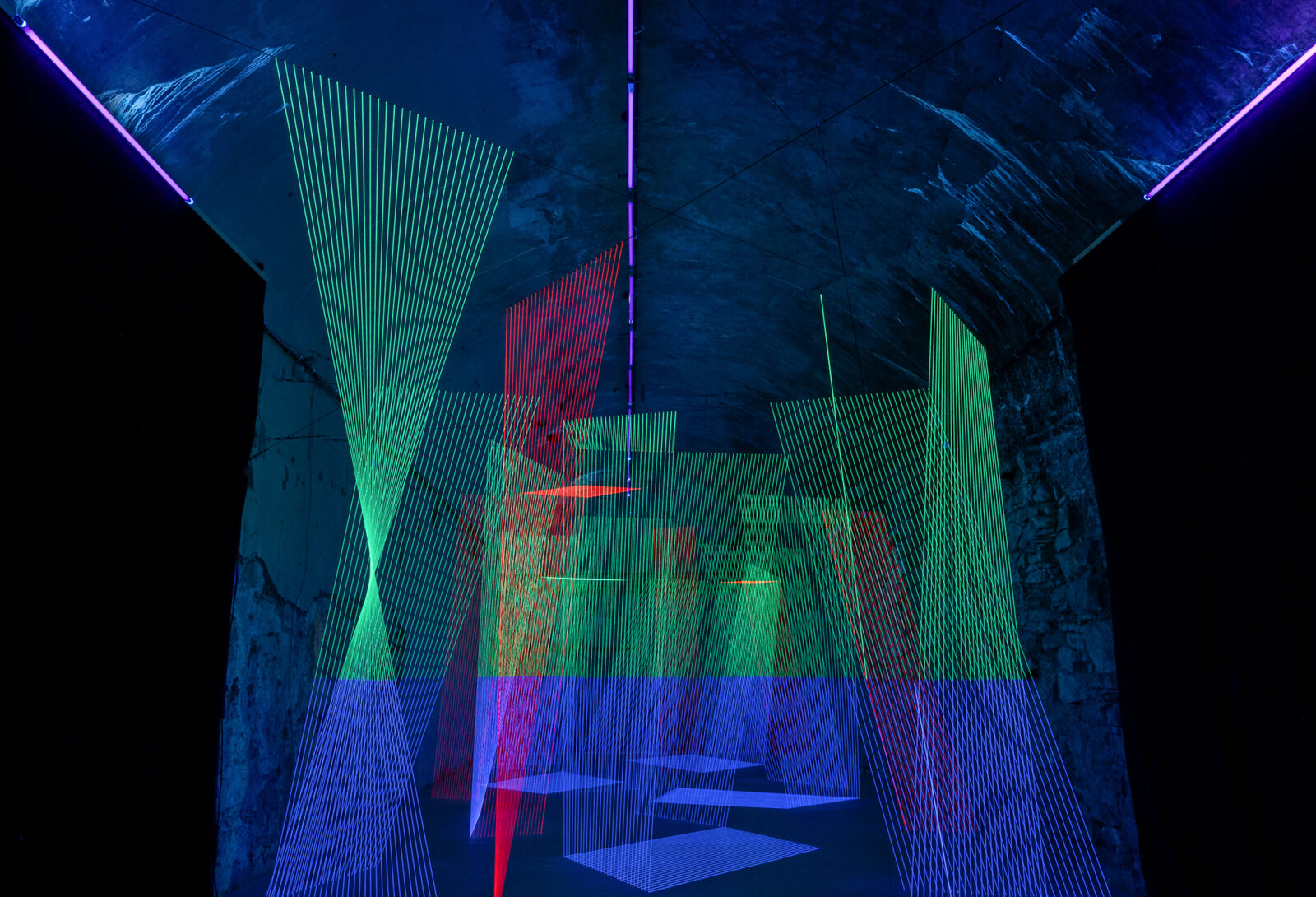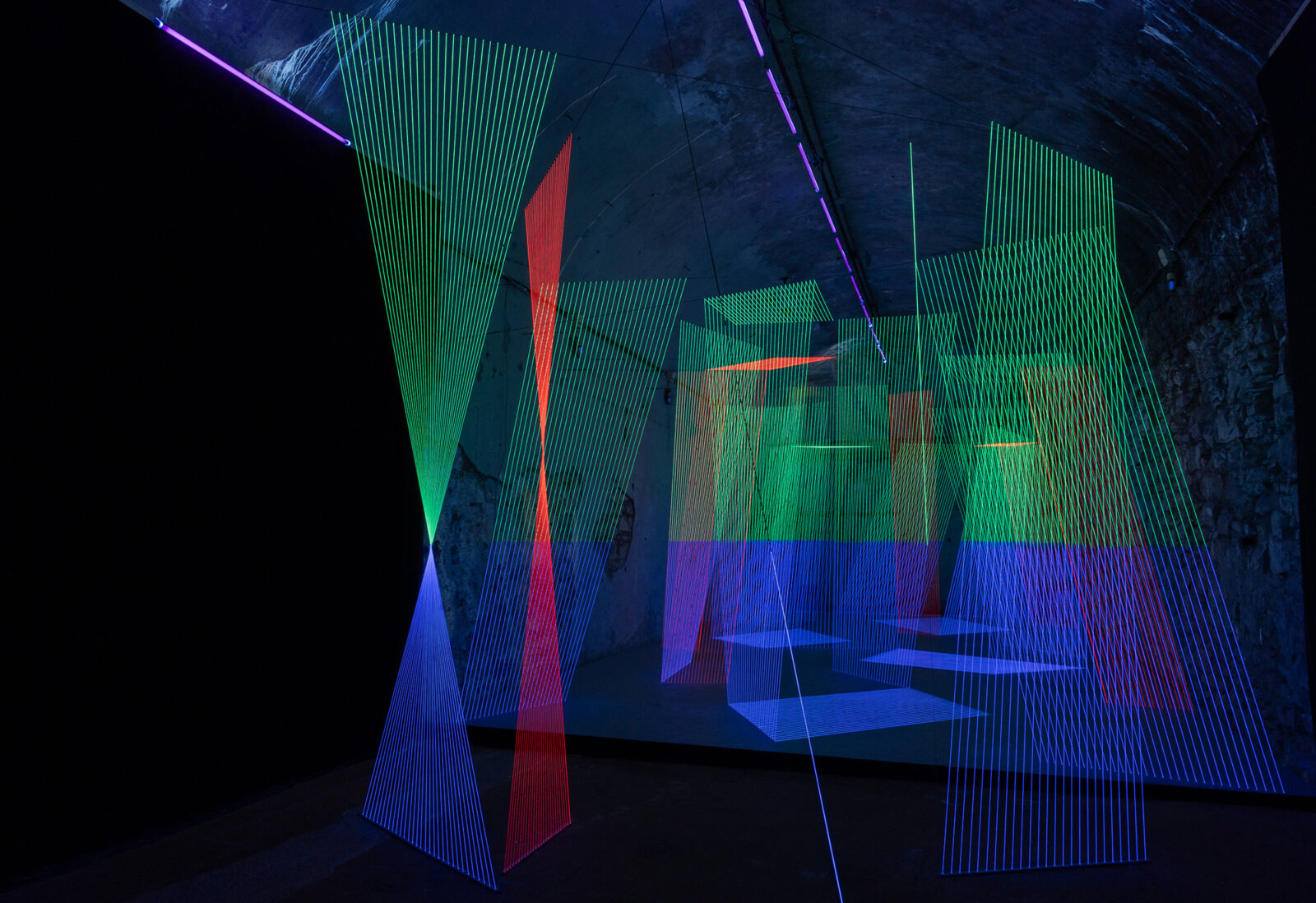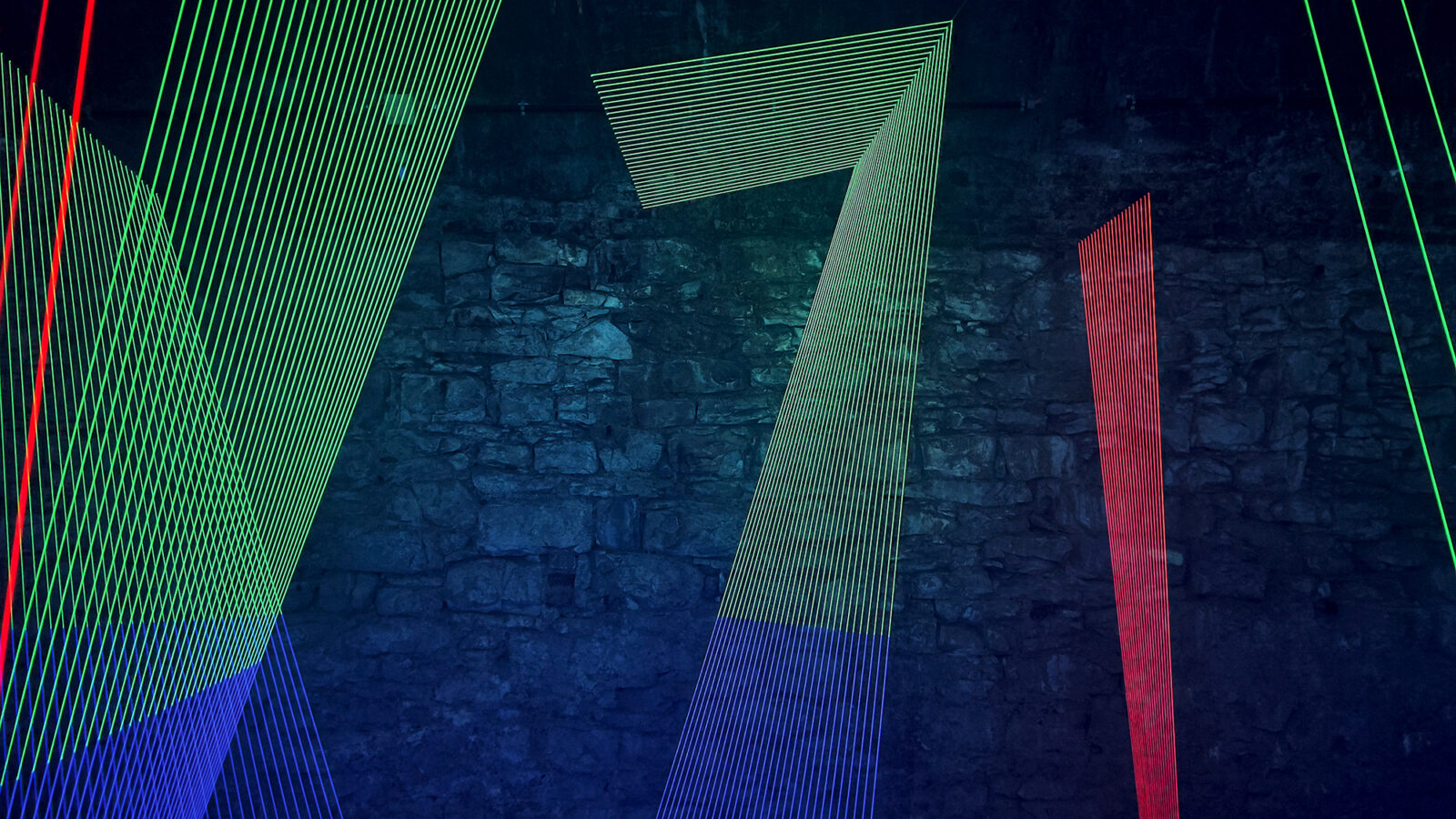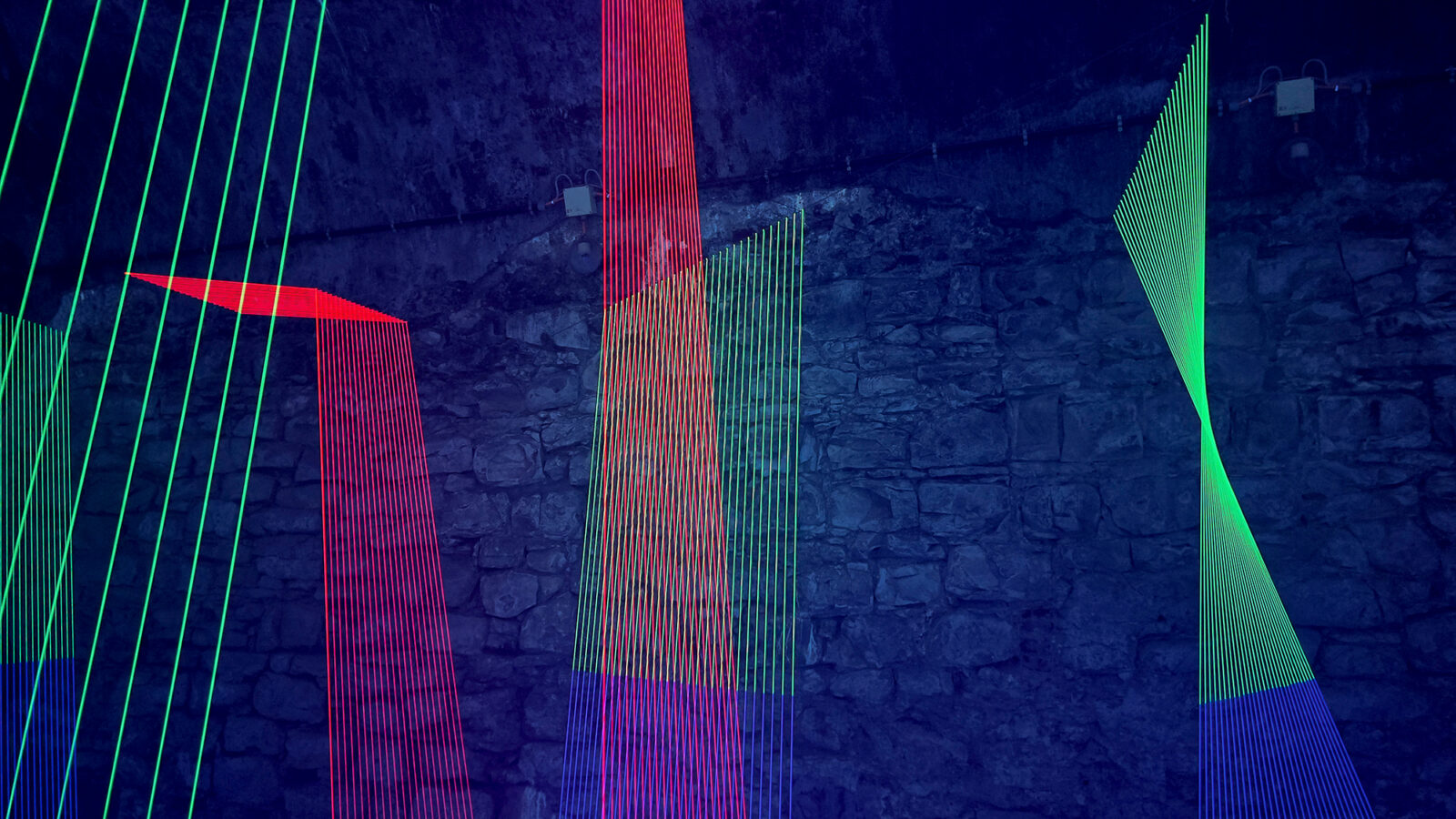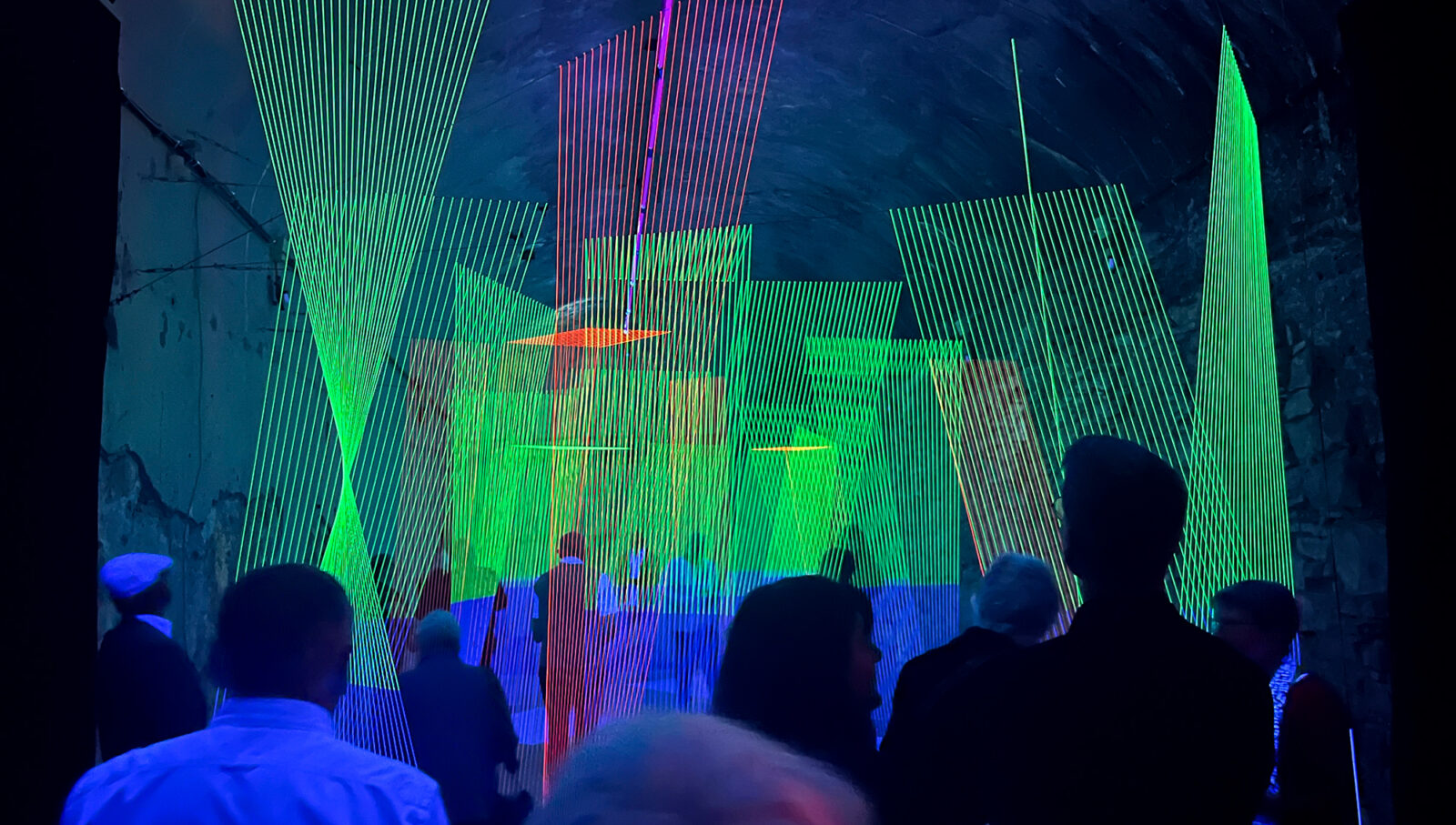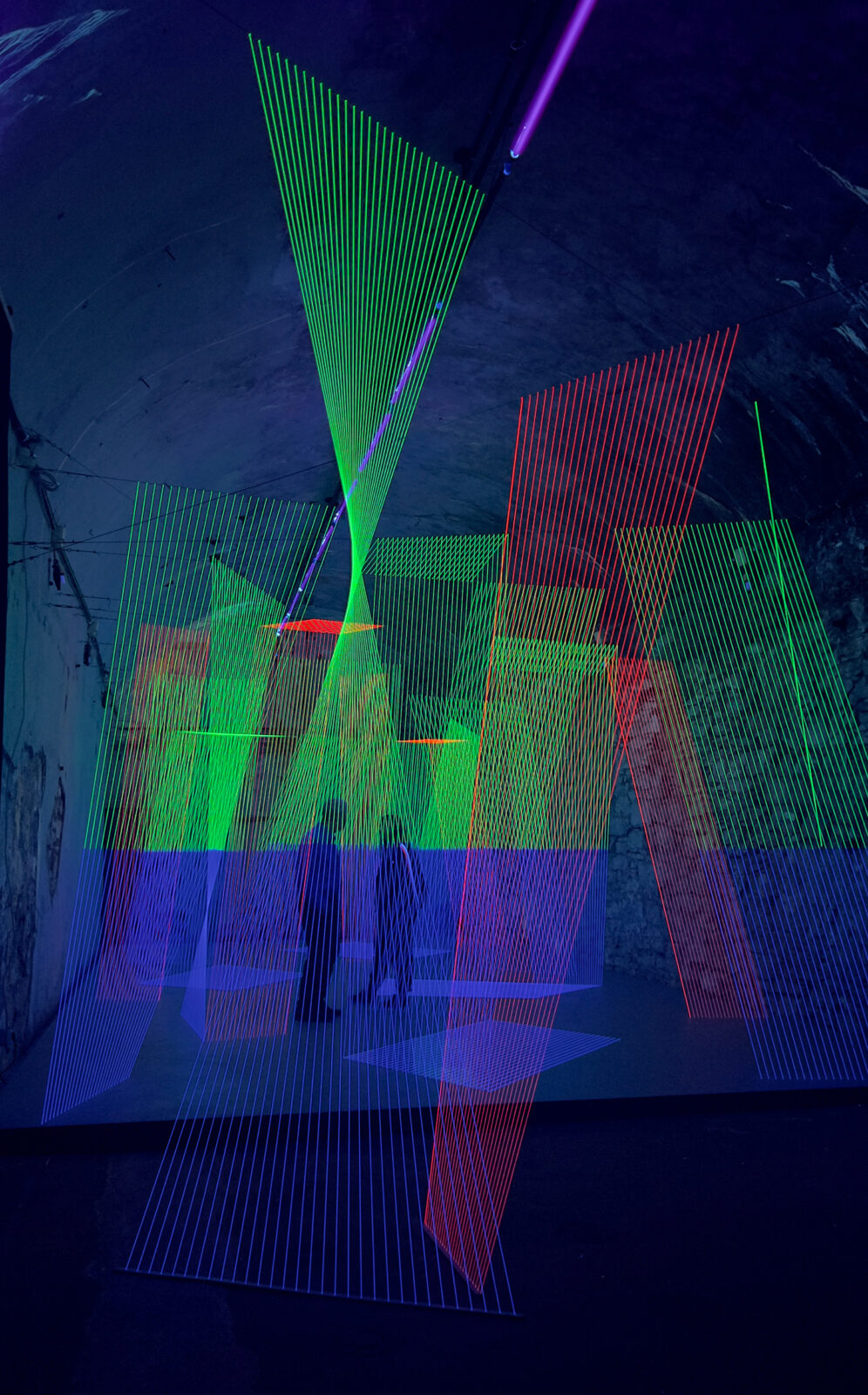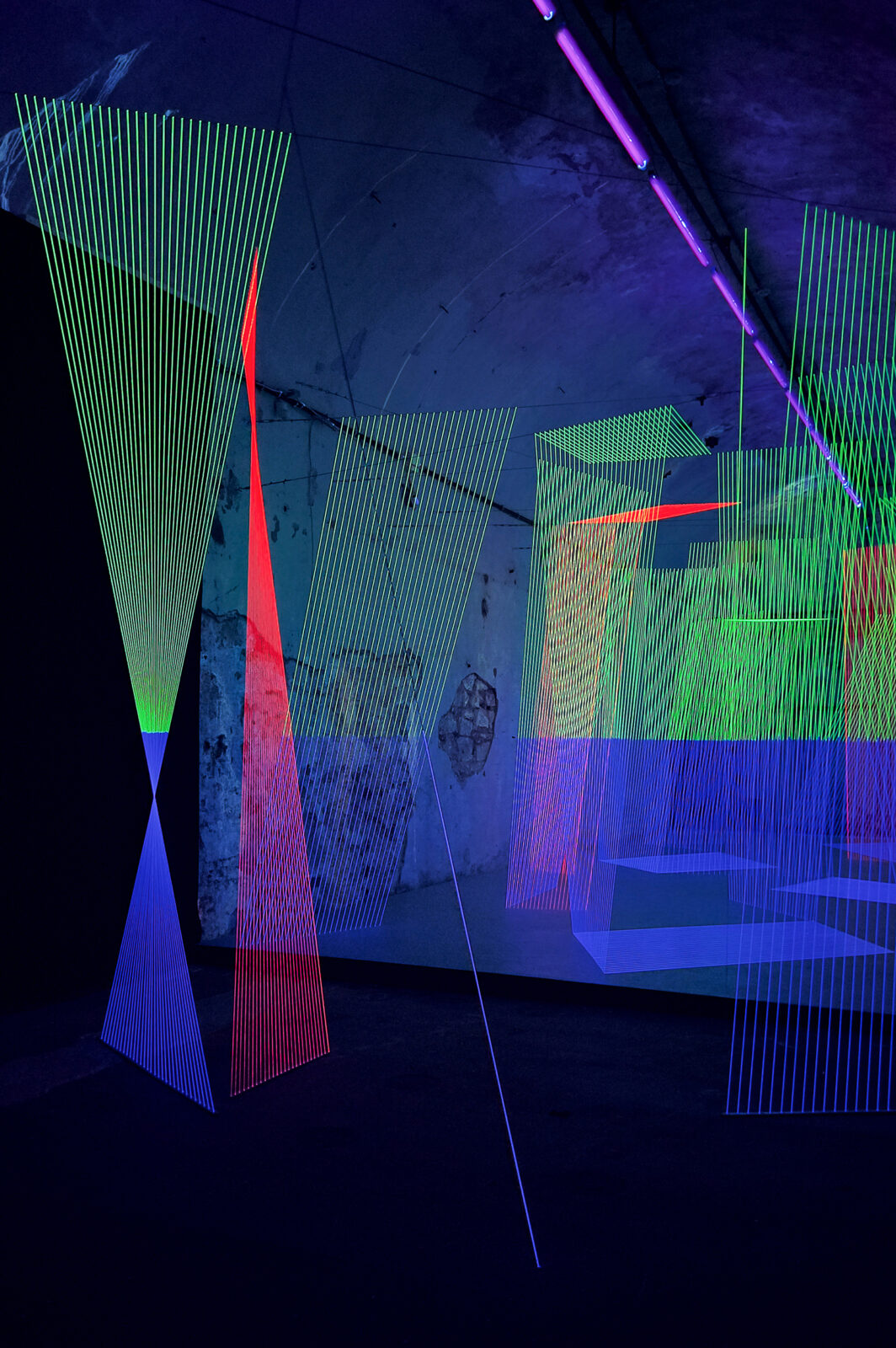LIGHT-LAND-SCAPES
Vernissage: 06. June 2025 / 19:00
Duration: 07. June 2025 – 04. January 2026
Andreas Schmid (DEU) | Jeongmoon Choi (KOR) | Yoana Tuzharova (BGR) | Atelier Rosalie / Thomas Jürgens (DEU)
Zentrum für Internationale Lichtkunst | Centre for International Light Art
Lindenplatz 1
59423 Unna
https://www.galeriewatson.de/
Photo: Leonard Lueg, Jeongmoon Choi
DE
Mit der neuen Wechselausstellung Light-Land-Scapes eröffnet das Zentrum fürInternationale Lichtkunst (ZfIL) ab dem 7. Juni 2025 neue Perspektiven auf die Vorstellung von Landschaft. Besucher:innen werden eingeladen, Landschaft nicht länger als Abbild der Natur zu begreifen, sondern als einsinnliches Spiel aus Licht, Raumund Erlebnis. In den tief unter der
Erde liegenden Gewölben der ehemaligen Lindenbrauerei entstehen leuchtende Topografien – keine Abbilder der Natur, sondern begehbare Erfahrungsräume zwischen Kunst, Architektur und Wahrnehmung. Die eigens für die Ausstellung entwickelten Installationen reagieren auf die charakteristische Architektur des unterirdischen Ortes – und gehen sogar darüber hinaus: Sie erschaffen erstmals im ZfIL neueUmgebungen, die Landschaften allein durch Licht sichtbar werden lassen.
Floating Horizon – Light installation by Jeongmoon Choi
Tex: Leonard Lueg
Auch bei den Raumzeichnungen der südkoreanische Künstlerin
Jeongmoon Choi steht die Linie im Zentrum. Ein geeignetes
Material für ihre Werkreihe Drawing in Space findet sie in
Fäden, die durch den Einsatz von Schwarzlicht sichtbar gemacht
werden. Ausgangspunkt für ihre Installationen ist immer
der vorgegebene Raum. Auf diesem aufbauend erstellt die
Künstlerin ein Konzept für ihre dreidimensionalen Zeichnungen.
Die Abwesenheit des Tageslichts in der unterirdischen
Ausstellungsfläche in Unna stellt ideale Bedingungen bereit,
um das Zusammenspiel von UV-Licht und den reflektierenden
Linienstrukturen wirksam zu machen.
Der in ein sanftes Schwarz eingehüllte Raum tritt hier
weiter zurück. Die robuste Industriearchitektur mit ihrem
unebenen Mauerwerk wird von den fragil anmutenden und
geradlinigen Fäden, die fluoreszierend aus der Dunkelheit
hervortreten, ausgelotet und neu definiert. Einzig diese
Lichtlinien geben uns Hinweise auf die Raumgrenzen.
Das punktuelle Aufeinandertreffen von Werk auf Raum
ermöglicht eine Verortung, ähnlich einer in die Landschaft
gesetzten Wegmarkierung. Die Bewegung von diesem Punkt
weg, die Linie, erschließt lichtzeichnend einen Weg. Mit der
Ausdehnung von der Fläche in den Raum materialisiert sich
die Linie als leuchtender Faden und die Zeichnung wird durch
unsere Bewegung erfahrbar.
Jeder von Choi gespannte Faden ist eine bewusste
Entscheidung für einen bestimmten Weg. Eine
Richtungsänderung der Linien erzeugt eine Fläche, eine
Überlagerung mehrerer Flächen erzeugt nicht nur neue
Strukturen, sondern auch neue Räume: Aus Punkt wird
Linie, aus Linie wird Fläche, aus Fläche wird Raum. Dieses
Raum-im-Raum-Gefüge der im mystischen Dunkel scheinbar
verschwimmenden Umgebungsarchitektur und der geradlinigen
Flächen erzeugt den Eindruck einer leichten Vibration im
Gesamtraum – denn während die Grenzen des faktischen
Raumes sich aufzulösen scheinen, bringen die überlagernden
scharfen der Raumelemente durch einen Moiré-Effekt
neue Strukturen zum Vorschein. Das aufkommende Gefühl
von Desorientierung kann auch als Handlungsaufforderung
verstanden werden, den Raum und die Landschaft in ihrer
labyrinthartigen Anordnung zu erkunden und Orientierung
zu suchen:
Erstmalig nutzt die Künstlerin zwei unterschiedliche Farben
für jeweils einen Faden und erzeugt so eine Horizontale im
Raum, die titelgebend ist. Dort, wo von oben kommend
die Farbe Grün und von unten kommend die Farbe Blau
aufeinandertreffen, entsteht eine Grenzlinie als weitere Ebene,
die scheinbar oben von unten trennt. Entgegen der vielen
Fäden hat diese schwebende Linie keine materielle, greifbare
Exakt in Waage gebracht kann der Horizont als verlässlicher
Bezug dienen, wenn man in der unregelmäßigen
Architektur und in der wechselhaften Lichtarchitektur nach
Orientierung ringt.
Die horizontale Linie ist jedoch unter der durchschnittlichen
Augenhöhe angeordnet und bedingt, dass die Bewegung von
uns Besuchenden nicht alleinig in den Raum hinein geht,
sondern die Arbeit auch in der Bewegung von oben nach unten
erfahrbar wird. Die gewohnte Bewegung nach vorne wird so
durch eine vertikale Bewegung ergänzt, wenn versucht wird,
durch ein Beugen oder Knien die Farbtrennung der einzelnen
Fäden in eine Waagerechte zu bringen und sich so den Titel der
Arbeit Floating Horizon zu erarbeiten.
Noch bevor wir vollends in die Raumzeichnung eintauchen,
stechen zwei einzelne Fäden aus der Menge hervor, denn
sie entfliehen der Dualität von Grün und Blau. Ein grüner
Faden kommt von der Decke, ein blauer Faden sprießt aus
dem Boden. An der horizontalen Linie, wo sich beide Farben
für gewöhnlich treffen, verlieren sie jeweils ihr Leuchten. Als
Intro und Outro der Zeichnung sind sie Konstruktion und
Dekonstruktion zugleich und zeigen uns die Ordnung auf, in der
wir uns zu bewegen beginnen.
Ein zusätzlicher Farbakzent kommt durch vereinzelte Elemente
ins Bild, die sich aus orangefarbigen Fäden zusammensetzen.
Die landschaftliche Perspektive eines Horizonts vor Augen,
wirken sie wie Strahlenbüschel der Sonne, die sich durch eine
Wolkendecke arbeiten und die Wolken an der Stelle, an der sie
hindurchbrechen in ein kräftig leuchtendes, aber ebenso zartes
Orange hüllen.
Vor dem Horizont stehend ist nicht ersichtlich, wie tief
es hineingeht. Jeongmoon Choi gibt uns die einzigartige
Möglichkeit, den Horizont zu durchqueren und physisch zu
erkunden, was wir sonst ausschließlich vor uns sehen. Ein
atmosphärischer Klang, der in einer Zusammenarbeit mit
der japanischen Klangkünstlerin Amy & her quiet experiments
entstanden ist, füllt von hinten ausgehend das Tonnengewölbe
und zieht uns in das Unbekannte. Mit jedem Schritt in die von Existenz
und ist virtuell. Die Formgebung im Raum entsteht
hier durch die Farbe allein.
Choi geschaffene Landschaft tun sich neue Zwischenräume
auf. Von ihnen aus nehmen wir den uns umgebenden
Ausstellungsraum deutlicher wahr, aber ebenso den Kontrast
von Bau- und Kunstwerk. Das engmaschige Geflecht an Linien,
das uns zuvor Verwirrung bescherte, lichtet sich, bringt jetzt
Orientierungslinien hervor und lässt doch mit jeder neuen
Bewegung auch neue Muster entstehen.
Die grazile Arbeit spielt mit der Massivität des vorgefundenen
Ortes. Floating Horizon schafft sowohl Kontrast als auch
Übergang von der unruhigen, in der Dunkelheit verblassenden
Bausubstanz und den gerade Linien, die auf sie treffen. Auch die
Fäden als Material bringen eine Spannung zum Ausdruck. Wirkt
ein einzelner feiner Faden noch fragil, bilden mehrere Fäden
hingegen ein Netz, das Stabilität ausstrahlt. Wir Rezipierenden
können nicht einzig die Raumzeichnung visuell und physisch
erfahren, auch müssen wir ihr Verhältnis zur Umgebung –
zwischen Stärke und Verletzlichkeit, Sicherheit und Risiko –
neu verhandeln.
EN
With the new temporary exhibition Light-Land-Scapes, the Centre for International LightArt (ZfIL) is opening up new perspectives on the idea of
landscape from 7 June 2025.Visitors are invited to understand landscape no longer as an image of nature, but as a sensual interplay of light, space and experience. In the deep underground vaults of the former Linden brewery, luminous topographies are created – not images of nature, but accessible spaces of experience between art, architecture and perception.The installations developed especially for the exhibition respond to the characteristic architecture of the underground location – and even go beyond it:for the first time at ZfIL, they create new environments that make landscapes visible through light alone.
Floating Horizon – Light installation by Jeongmoon Choi
Text: Leonard Lueg
The line is also at the focus in the spatial drawings of South
Korean artist Jeongmoon Choi. She finds an appropriate
material for her Drawing in Space series of works in threads,
made visible through the use of UV light. The point of departure
for her installations is always the given space; building on this,
the artist creates a concept for her three-dimensional drawings.
The absence of daylight in the below-ground exhibition area in
Unna provides the ideal conditions for bringing the interplay of
UV light and the reflective line structures into effect.
Here, the space, enveloped in a soft black, retreats further.
The robust industrial architecture with its uneven masonry is
probed and redefined by the fragile-looking and taut threads
emerging, fluorescent, out of the darkness. These light-lines are
our sole clues as to the room’s limits. The occasional meeting of
work with space enables localization, similar to waymarking set
into the landscape. The movement – the line – away from that
point beats a graphic path of light. As the plane extends into
the space, the line materializes as a gleaming thread and the
drawing becomes tangible through our movement.
Each thread tensed by Choi is a conscious decision in favour of
a certain path. A change in the lines’ direction produces a plane;
a superimposition of multiple planes not only new structures,
but also new spaces: point becomes line, line becomes plane,
plane becomes space. This space-within-space structure – the
surrounding architecture that seems to fade in the mystical
darkness and the planes of straight lines – generates the
impression of a slight vibration in the space as a whole; for
while the boundaries of the actual space appear to dissolve,
the overlapped crosshatching of the spatial elements brings
new structures to the fore due to a moiré effect. The feeling
of disorientation that arises can also be understood as a call to
action to explore the space and the landscape in its labyrinthine
arrangement and seek orientation:
For the first time, the artist is using two different colours for
one thread, thus generating a horizontal in the space which
gives the piece its title. At the point where the colour green,
coming from above, meets the colour blue, coming from below,
a boundary is created and forms another plane, apparently
separating top from bottom. Unlike the many threads, this
floating line has no material, graspable existence and is virtual.
In this case, the shaping in space is the product of colour alone.
Balanced with precision, the horizon can be used as a reliable
reference if one is wrestling for some orientation amid the
irregular architecture and the changeable architecture of light.
However, the horizontal is arranged below average eye level,
and that means that we visitors are not drawn into the space
solely through our movement, but we can also experience
the work in motion from top to bottom. Thus, the habitual
movement forwards is supplemented by a vertical movement,
when we try to form a horizontal out of the colour division of
the individual threads by bending or kneeling and thus realize
the title Floating Horizon for ourselves.
Even before we completely immerse ourselves in the drawing
in space, two single threads stand out from the mass, for they
escape the duality of green and blue. One green thread comes
from the ceiling, one blue thread shoots out of the floor. At
the horizontal line where the two threads usually meet, each of
them loses its gleam. The Intro and Outro to the drawing, they
are construction and deconstruction at once and highlight to us
the order in which we start to move.
An additional touch of colour comes into the picture through
isolated elements made up of orange threads. With the
landscape perspective of a horizon before our eyes, they have
the appearance of sunbeams working their way through cloud
coverage and cloaking the clouds in an intensely gleaming, but
equally tender orange at the point where they pierce through.
Standing in front of the horizon, we cannot make out how far
in it goes. Jeongmoon Choi gives us the unique opportunity to
cross through and physically explore the horizon, a thing which
we otherwise see exclusively in front of us. An ambient sound,
created in collaboration with the Japanese sound artist Amy
& her quiet experiments, fills the barrel vault from behind and
pulls us into the unknown. New gaps open up with every step
into the landscape created by Choi. Looking out from them
we perceive the exhibition space around us more clearly, but
equally we notice the contrast between masonry and artwork.
The closely meshed weave of lines which previously confused us
now clears, producing lines for orientation and yet, with each
new movement, also causing new patterns to arise.
The graceful work plays with the massiveness of the found
location. Floating Horizon forms both contrast to and transition
from the rough structure fading in the darkness and the
straight lines that meet with it. The threads, as material, also
express a tension. While a single fine thread still appears fragile,
multiple threads, by contrast, form a net that radiates stability.
We recipients are unable to experience the drawing in space
solely by visual and physical means; we must also subject
its relationship to the surroundings – between strength and
vulnerability, security and risk – to renegotiation.
